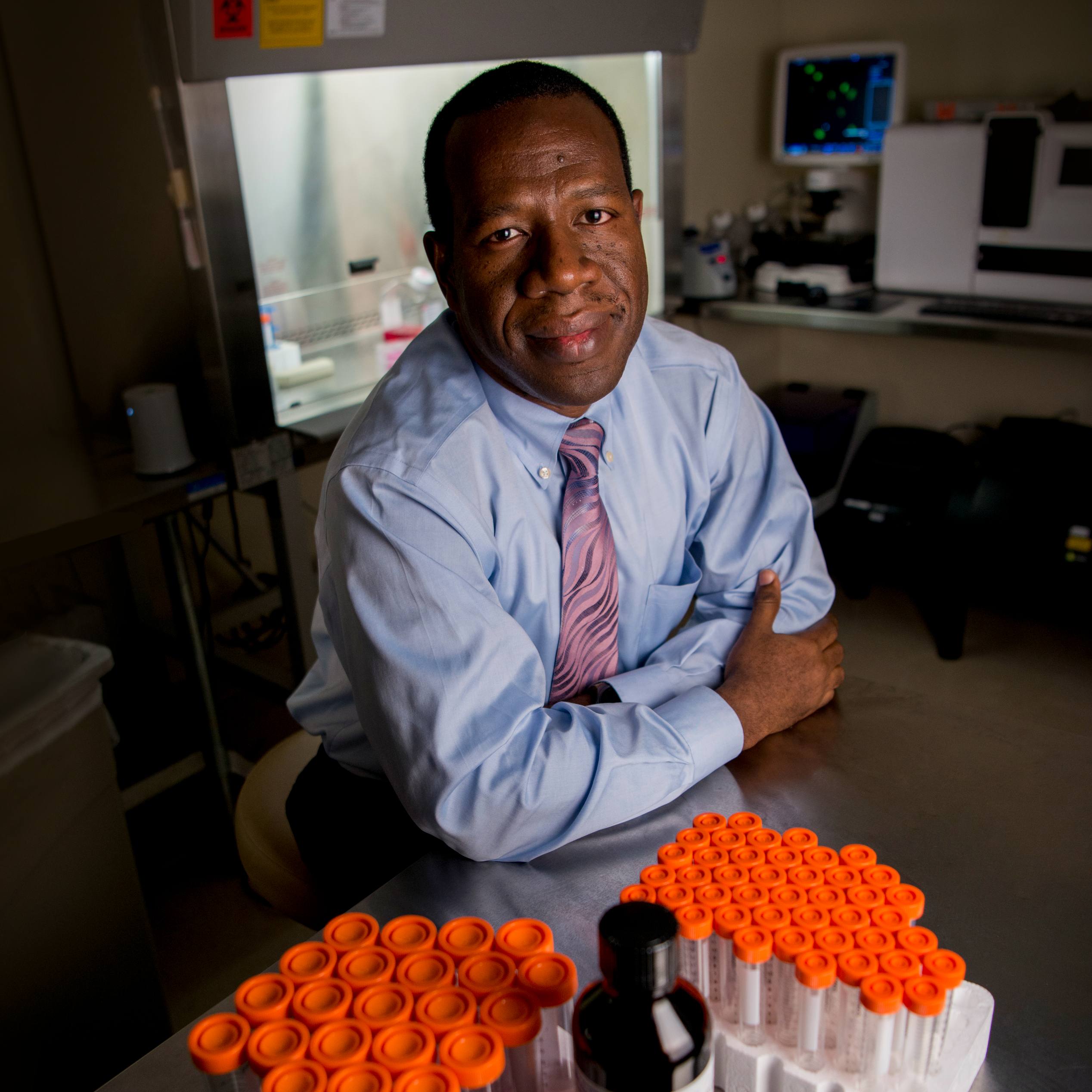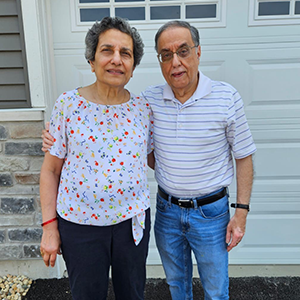-
Model for rare cancer results instead in obesity
While a typo in a letter or email is a problem it's not a big one, usually. But when that typo is in genetic code, it’s a very different matter. Mayo researchers in the lab of L. James Maher, III, Ph.D., a Mayo Clinic biochemist, and their collaborators, are examining a genetic typo that can lead to tumors in specialized nerve cells, or paragangliomas, and in the cells of the gastrointestinal tract, or gastrointestinal stromal tumors (GIST). This typo can run in families, causing an inherited cancer risk.
Tumors related to the typo can be cancerous or benign, and they are generally diagnosed in adults. While rare, these tumors can be life-threatening and difficult to treat.
"The genetic typos shared by these paragangliomas and GISTs are particularly puzzling because they disable mitochondria, tiny organelles considered to be the 'engines' of the cell," explains Dr. Maher, who became fascinated with malignant paragangliomas because of his personal 45-year experience managing this cancer. "Understanding these tumors would be improved if they could be found in other animals."
In the lab, the researchers are exploring ways to recreate the genetic typo in a nonhuman, fast-growing model. To do this, they develop mice with the typos present in different mouse cells at different times and places. But to date, they haven't been able to recreate the tumors. So they began a new experiment and got a surprise, which they recently published in The FASEB Journal, the journal of the Federation of American Societies for Experimental Biology.

Gene Recipes
In cells, DNA acts similarly to a cookbook. It holds the recipes ― the genes ― that provide instructions on how to make complicated dishes. Gene "recipes" detail what ingredients to gather, combine and process — called "transcription" and "translation" in scientific terms — to result in a finished feast that scientifically means something like an enzyme, for example.
But if the recipe has a typo, it can mean the final product is different than it should be. For example, 4 cups of sauce for 1 pound of pasta? No problem. The cook can serve the meal with garlic bread to soak up the extra few cups. But a cake recipe where the word "sugar" is missing? Ruinous. The baker would need to start again.
In terms of gene alternations, there are some that might help an organism, some that neither help nor hurt, and some that spell the end of an organism ― perhaps before it has progressed beyond a few cell divisions.
Studying Paragangliomas
The team, which was led by Fatimah Al Khazal, a Mayo Clinic research technologist who is now a doctoral student in Mayo Clinic Graduate School of Biomedical Sciences, devised a plan to recreate the gene typo by focusing on the main way they think it shows up: in a faulty enzyme that operates in the cell's mitochondria. Loss of that enzyme, called "succinate dehydrogenase," results in confused cells.
For certain cells, this confusion seems to promote tumor development. But these tumors often don't show up until a patient reaches adulthood, so the researchers need a model that develops the tumors faster.
For this attempt, Al Khazal and collaborators tried creating the typo only in cells of the nerve tissues that are at risk of becoming tumors. The typo was triggered at a certain stage of development when these cells mature. Al Khazal hypothesized that creating this typo in these cells at this time would be enough to trigger tumors.

From Cancer to Obesity
In a surprise finding — which is not uncommon in genetics, according to Dr. Maher — the new model did not generate any paragangliomas or GIST tumors. Instead, it generated obese mice. The team had unintentionally uncovered a pathway to weight gain.
"It remains a complete mystery why the typo in the mouse cells at risk for tumor development does not trigger the cancers expected based on human examples," says Dr. Maher. "One interesting possibility is that the typo needs to occur earlier in development in order to confuse these cells into growing out of control."
But why do these particular designer mice get fat?
In their paper, Al Khazal and team, including other Mayo Clinic investigators and scientists from the University of Seville in Spain, describe a few clues. Their mice displayed some altered behaviors, and showed evidence of abnormal brain development. Perhaps more importantly, the mice appeared to have little or none of some hormones implicated in eating behavior and feelings of reward after a meal.
"Perhaps the mice lack this sense of reward and overeat as a consequence," says Dr. Maher. "Because the specialized nerve cells of interest include cells of the adrenal gland that produce these hormones, we hypothesize that when the genetic typo occurs in these cells during mouse development, rather than triggering cancer, it alters the function of these cells and prevents proper hormone production."
Instead of a cancer model, this unexpected model could provide more insight into the complicated disease of obesity. Indeed, there are multiple medications for obesity that modulate these hormones says Andres Acosta, M.D., Ph.D., a Mayo Clinic gastroenterologist and obesity medicine expert. “This interesting finding may explain the role of dopamine and norepinephrine in the control of food intake.”
In the meantime though, the Maher lab is already trying again, this time creating a mouse model where the typo is triggered at a specific stage of mouse development before birth.
"Will years of persistence finally deliver the cancer model? Only time will tell," Dr. Maher says.
— Sara Tiner, January 2021
- To read more about obesity research at Mayo, click through to "Good Advice on Obesity? Wait for It …"
- To read more about adrenal research at Mayo, check out, "All Adrenal Tumors Should be Investigated."
- To read more about the Maher lab, click "Nucleic Acid Structure and Recognition Lab."







